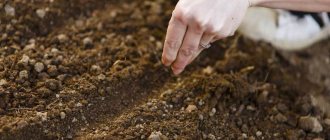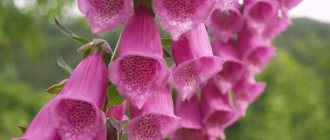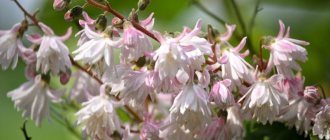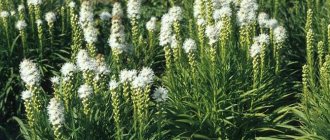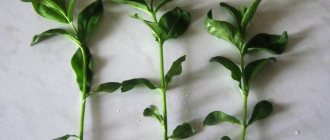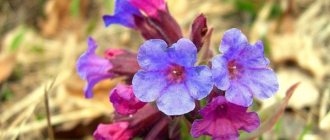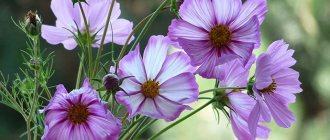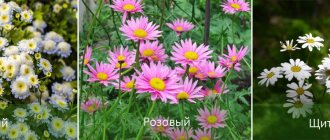General description of Alyssum or Lobularia
Alyssum is popular among flower lovers, as the plant is distinguished by abundant flowering and a sweet aroma. The height of the crop is from 20 to 30 cm, the flowers come in red, purple, white, pink, and yellow shades. The roots are fibrous and compact. The stems are strongly branched, the leaves are lanceolate. The narrow, hairy leaves become inconspicuous when the plant blooms.
Bees, butterflies and other insects love this flower, making it an excellent garden plant to attract pollinators. After the flowering period, a fruit is formed - a pod. Growing alyssums is practiced in summer cottages and garden beds; they produce buds in April and May, creating a kind of snow carpet, and then from mid-June to October.
It self-seeds easily and will become a permanent resident in your flower beds every year.
How to properly care?
Growing rock alyssum will not be particularly difficult - even a novice amateur gardener can successfully cope with this task. After all, this “sunny” flower can grow in one place without replanting for several years, while requiring almost no care. But in order to create a spectacular flowerbed that will delight the eye throughout the summer, you must follow some growing rules.
Site selection
In nature, rock alyssum grows on mountain slopes. Therefore, in a suburban area, it can be safely placed on rocky soil, well heated by the sun most of the day.
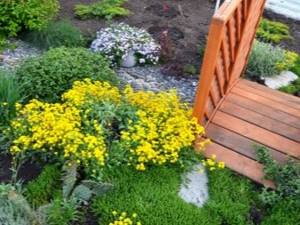
Watering
In dry summers, alyssum should be watered at least once or twice a week.
Caution should be exercised in this case, since waterlogging of the soil contributes to the development of diseases. At the same time, with a lack of moisture, the decorative quality of the plant decreases and the flowering period decreases.
Water the plant early in the morning or late in the evening at the root or using the sprinkling method. To prevent the soil from compacting, it must be loosened before watering. This will allow air to flow better to the roots.
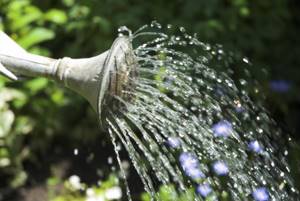
Top dressing
Despite the fact that alyssum feels great in any soil, nevertheless, it responds to fertilizing with vigorous growth and long-lasting flowering. If the soil on the site is fertile, fertilizing is carried out in the second year. In the spring, after watering, nitrogen fertilizers are applied in liquid form, which will help the alyssum grow green mass. In summer (with an interval of 10 days) the plant is fed with potassium and phosphorus fertilizers.
Trimming
With the onset of spring, it is recommended to prune the alyssum shoots a little so that in the future the bushes will grow more neat and lush. When pruning, all diseased, damaged and weak stems are removed, while simultaneously giving the bushes a beautiful shape. To achieve a second wave of flowering, in the summer all shoots are shortened by several centimeters.
Preparing for winter
Alyssum winters well. With the onset of cold weather, the plantings are covered with dry leaves, spruce or pine spruce branches. In winter, make sure that there is a sufficiently high snow cover on the site.
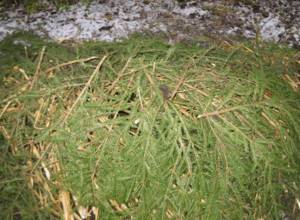
How to grow the perennial flower Alyssum
Growing Alyssum flowers from seeds at home is the most popular method for obtaining beautiful and healthy plants. It is best to plant seed material on seedlings, since this method allows you to see the flowering of the crop faster. But there are flower growers who prefer sowing directly into open ground. We will look at both the first and second methods of obtaining beautiful flowers.
Rules for sowing in open ground
You can sow seeds in garden conditions only with the arrival of May. It is recommended to bury the seeds only 1.5 centimeters. The seeds must be covered with a layer of soil on top. After the seedlings appear, they must be thinned out. Remember that when using this method, flowering may be seen too late in the first year, or not seen at all.
The best option would be to sow seeds before winter so that they can undergo natural stratification. In spring, the seedlings will sprout quite well, and their flowering will be timely.
Seedling growing method
Planting Alyssum flowers as seedlings is a more reliable method of obtaining beautiful and healthy plants. To obtain good seedlings, seed material is planted in April or late March. Prepare special boxes, fill them with soil mixture containing a sufficient amount of lime.
Distribute the seed material evenly over the surface of the ground, then gently press it into the surface or sprinkle it with a small layer of substrate. After sowing, the containers are moved to a room with good lighting, but first cover them with glass or film. The air temperature should be +10...15 degrees. The crops are evenly moistened, and ventilation is also regulated. If all manipulations are performed correctly, you can observe the first seedlings within 1 week from the moment of sowing.
After the formation of the first true leaf blade, the seedlings are fed with complex fertilizer. Picking seedlings into separate containers is carried out after the appearance of 2-3 true leaves on the plants. But, if the crops develop quickly enough, then the picking process can be skipped by transplanting the plants directly into the flower garden.
Transplanting seedlings into a flower bed
Alyssum flowers are planted in open ground in late May - early June. A prerequisite is that the threat of frost has passed. For planting, choose areas with good lighting. The soil chosen is dry with good drainage, the reaction is neutral. Also, slightly alkaline, slightly acidic soils are suitable for planting the crop.
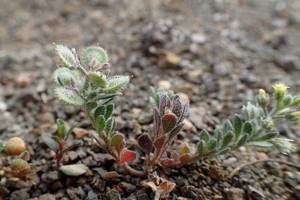
Photo of a young Lobularia seedling
Additionally, when planting, take into account this point - the plant can develop in width by several centimeters. Therefore, a distance of 40 centimeters is left between the bushes. Although this factor largely depends on the type and variety of crop.
The planting hole is made proportional to the size of the root system, taken together with the lump of earth. After planting, do not forget to water to enrich the soil with moisture. In this case, the Alyssum flower will begin to produce lush buds in 2-3 months.
2.Growing in open ground
Alyssum can be planted in open ground directly from seeds or first (most often) grown seedlings at home. Also, for growing in open ground, seedlings purchased from flower shops are used.
To propagate the plant in open ground, you can use your own collected seeds. Seeds are taken only from fully ripened pods, which form on the bushes in the first half of autumn.
A warm, dry and windless day is selected for collection. You can spread a sheet of newspaper or a light-colored cloth under the lobularia bushes, and also use disposable plates to collect the seeds. The pods can be rubbed directly on the plant with your fingertips, in which case the seeds will fall out directly onto the paper or cloth.
The resulting planting material is dried in a warm place and packaged in paper or fabric bags.
Outdoors, seeds are sown in early May - when the likelihood of return frosts is low or before winter. Autumn sowing is carried out in such a way that seedlings do not appear before the onset of winter.
Perennial species are often grown by sowing seeds directly into open ground.
Select a place for planting that is protected from strong winds and sow in shallow furrows. The distance between the grooves is maintained at approximately 15 - 20 cm.
From above, the seeds are covered with a layer of soil about 1.5 cm thick. With deeper depth, the germination of the seeds sharply decreases, since the young shoots do not have enough strength to overcome such a thickness of soil.
When sowing in autumn, the seeds will naturally undergo preliminary stratification, and the first shoots will appear in early spring, and flowering begins in July and lasts until frost.
When sown in May, flowering will occur somewhat later - in August. After the first young shoots appear, they are thinned out so that they do not interfere with each other’s development.
For the seedling method, seeds are sown in late February - early March. Seedlings are planted in a permanent location in the second half of May - when the top layer of soil, about 8-10 cm thick, has warmed up well.
Alyssum prefers well-lit places, inaccessible to strong gusts of wind, with neutral and very nutritious soil containing a large amount of organic matter.
The bushes are planted in such a way that a distance of 40 - 50 cm is maintained between them. Despite its short growth, lobularia can form fairly wide bushes with lodging stems - this must be taken into account when planting.
It is advisable to mix a small amount of river sand into the soil in which the plant will be planted to improve drainage.
Flowers are planted using the transfer method - young plants are taken out of plastic cups and immersed in a planting hole along with a lump of earth, without destroying it.
When planting, it is necessary to maintain the same depth at which the plant was in the cup. strong deepening can lead to delayed flowering and rotting of plant stems. The soil around the plantings is lightly compacted and thoroughly watered.
Caring for flowers grown in open ground consists of periodic weeding, loosening the soil, timely watering and fertilizing.
Remember that young plants that need to grow green mass need fertilizers containing large amounts of nitrogen. At a later age, for the formation of buds, fertilizers for flowering plants with a high content of potassium and phosphorus are suitable.
In total, from planting to autumn, plants are fed 4 times - approximately every month.
Since lobularia does not like dry soil, and also suffers from fast-growing weeds, after planting its bushes can be mulched with sawdust or straw or peat.
Unfortunately, alyssum cannot withstand prolonged frosts below -15 C and cannot winter outside in the middle zone.
If you decide to leave this attractive, tender plant for the second year, then take it home in the fall by planting it in a pot. Such plants will bloom on the windowsill until the beginning of December.
In more southern latitudes, for the winter these flowers are covered with a layer of spruce branches, fallen leaves or non-woven material and sprinkled with snow on top. Plants open in early spring, as soon as the snow melts from this place. The alyssum will appear immediately from under the shelter with green leaves.
In the spring months, the plant is pruned, removing frozen and old shoots.
Proper care of Alyssum flowers
The rules for caring for such a plant are simple; let’s focus on the main points.
Watering Lobularia
Plants need systematic soil moisture, especially if there is a prolonged drought outside. Remember that if there is a lack of moisture, the crop will drop buds and even flowers that have already bloomed.
But, abundant watering is allowed only if the soil allows moisture to pass through well. If the liquid stagnates, the bushes will become wet and die. To understand whether a plant needs watering, dig the soil next to the plant 3-4 cm deep. If the soil is dry, it means that mandatory irrigation is necessary.
At the end of watering, weeds are removed from the area and the surface is loosened. To minimize the amount of watering and weeding, the area must be mulched in the spring.
Alyssum fertilizers
The perennial flower Alyssum must be fertilized during the period of growing green mass. For such purposes, fertilizers containing a lot of nitrogen are used. You can prepare your own fertilizer using urea (10 l) and Agricola-7 (1 tbsp).
This feeding is carried out before flowering begins. If you have annual representatives, then they are fertilized 4 times per season. The first time - long before flowering begins. With proper fertilization, the bushes will delight you with abundant flowering.
Flower pruning
For proper development of the bush and lush flowering, it is necessary to prune it systematically and on time. In spring, dried leaves and stems are removed from perennial crops.
After the end of summer flowering, the crop is pruned again. And after that the stems are shortened by 5-8 centimeters. This will stimulate secondary flowering. In addition, after flowering, the bushes look very compact and well-groomed.
Outdoor care
A riot of colors - a rainbow carpet of different varieties of alyssum
An unpretentious plant needs minimal care: timely watering, loosening the soil with subsequent removal of weeds, and fertilizing. In addition, alyssum needs pruning to avoid the unsightly appearance of the plant after flowering.
Watering
The plant needs to be watered regularly, especially in dry times.
Lack of moisture affects the development of the flower; it can drop flowers and buds overnight.
Excessive soil moisture will lead to rotting of the root system and the plant will simply “fall off its feet.”
You can determine that a flower needs watering if you dig up the soil 3 cm deep near the bush and it turns out to be dry, which means it needs watering. To reduce the frequency of watering, especially in dry times, it is necessary to mulch the plantings.
Fertilizer application
Perennial and annual species require different feedings, however, if planted in nutritious soil, they grow and develop well without fertilizing.
Annual varieties are the most demanding in terms of nutrients
During the entire growing season, it is recommended to feed the plants 4 times with nitrogen-containing and potassium fertilizers. In mid-spring, already at the end of April, organic matter is added to the soil. After seed germination, the seedlings are fed with nitrogen-containing preparations (but only after the development of several true leaves), then watered with a solution of complex fertilizers.
Lush and long flowering is possible only with timely application of fertilizers. If the soil is fertile, frequent fertilizing can be avoided.
Perennial plants are demanding on the saturation of the soil with nutrients, so annually it is necessary to add humus or water with infused chicken manure diluted with water 1:10. Plants need light soil, therefore, by weeding the soil once again to remove weeds, you make the soil loose and breathable, which provides the plant with better conditions for development.
Pruning is a must
Proper pruning of alyssum allows the plant to fully develop and bloom profusely. In early spring, it is necessary to remove all flower stalks, weak, dried out and diseased shoots from last year's shoots. It’s even better if this procedure is done in the fall.
Pruning not only allows you to preserve the decorative appearance of the bush, but also extends the flowering period
After the plant has finished blooming, you will need to cut off all flower stalks and shorten the shoots by almost half. This procedure stimulates re-blooming. During the growing season, alyssum bushes grow very much, so pruning is simply necessary - to eliminate the sloppiness of the bush and make it compact and well-groomed.
Preparing for winter
Silver alyssum can tolerate temperatures as low as -23 °C. all other varieties cannot survive harsh winters. For some of them, a drop to -15 °C is disastrous.
Lobularia looks great in hanging containers and flowerpots. Used to decorate balconies
To help the plant survive the winter, in late autumn you should add a layer of mulch and cover the bush itself with fallen leaves. In snowy winters, it is recommended to pour a mound of snow on the alyssum.
Morning glory: description, popular varieties, growing from seeds, planting and care (50+ Photos & Videos) + Reviews
Diseases and pests of Alyssum
The biggest plant problem is considered to be the cruciferous flea beetle. Bushes that are affected by the pest are sprayed with a vinegar-based solution (take 1 tablespoon of the substance per 10 liters of water). But this treatment is only suitable for powerful and mature bushes.
Another common pest is caterpillars. To eliminate them, spray the plants with tobacco infusion or chamomile. Cabbage moth is another popular crop pest. To combat them, Entobacterin or Lepidocide are used.
Late blight may appear as a disease. It occurs due to stagnation of moisture in the soil. The root collar and root system suffer the most. To combat the disease, use fungicides - Thanos, Kuproksat, Ordan.
Sometimes crops suffer from downy or powdery mildew. To combat such problems, Ordan, Oksikhom, and Bordeaux mixture are used.
Peculiarities of Lobularia reproduction
Alyssum is propagated by cuttings, seeds, or dividing the bush. Seed material is planted in greenhouses at the end of March or in open ground, but in May. Flowering of alyssum is observed 45-50 days after the first shoots. When planting crops, maintain a distance of 35-45 cm between bushes.
Use in landscape design
In the case of growing alyssum using the seedling method, there is an excellent opportunity to create a small decorative rock garden on your personal plot. You can also work on creating a rock garden, since such a plant looks ideal in stone compositions. This perennial looks great in crevices between stone tiles or cracks in masonry. Tall varieties of alyssum are usually used in border decoration. Ground covers will serve as an excellent frame for a flower bed with tall plants. Alyssum flowers look gorgeous in group plantings. They go well with forget-me-nots, heliotrope and night violet. Often designers also mix plants with gillyflower and pelargonium.
The alyssum is also suitable for single planting. It lies like a living carpet in the garden plot and delights the owners with its honey aroma. The plant can be grown not only in open ground, but also at home. Perennials planted in a pot decorate loggias and balconies. A lush and thick hat completely covers the pot, and the shoots of the bush become more branched and hang down at the edges. Alyssum flowers are beginning to look more like hanging flowers. Watering is carried out as needed. The same goes for pruning. The disadvantage in this case is the plant’s intolerance to indoor conditions in winter. Therefore, when cultivating alyssum in a pot, it should be planted annually.
In the next video you will find additional information about the cultivation, care and characteristics of perennial alyssum.
All rights reserved, 14+
The use of any materials without our prior written consent is prohibited.
Using Alyssum in garden decoration
Since planting and caring for Alyssum is not difficult, it is often used in garden decoration. The plant is planted in rock gardens, used to decorate retaining walls, and in rock gardens.
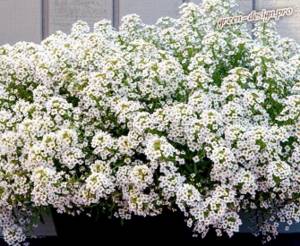
Low-growing shrubs are planted between concrete slabs; they decorate borders and low-growing flower beds. The culture feels great in group plantings. Alyssum is combined in a flowerbed with other flowers - Irises, Gladioli, Phlox, Forget-me-nots, Tulips. Alyssum also looks beautiful in flowerpots on loggias. Lobularia is loved by beekeepers, so they often plant it to attract bees.
Some tips for using Alyssum in garden landscaping
There are many ways to use this versatile annual in any garden. Let's list a few of them:
- Plant Lobularia in a hanging basket near your home's entryway, patio or deck where you can enjoy the sweet scent up close.
- Plant the flower between rows in your garden to help suppress weeds and attract insects that are essential for pollinating your garden crops.
- Plant Alyssum as a ground cover around garden roses to create a carpet of color.
- Combine white Alyssum with Salvia and blue Ageratum.
- In a rock garden with creeping thyme and sedum.
- Use Lobularia to fill gaps in a perennial border.
- Plant along stone walls and allow plants to spread out to the sides for a romantic, cozy effect.
- Add white alyssum varieties to your garden to brighten paths at night.
Features of growing in the garden
Alyssum, very well known in decorative floriculture, is widely used in landscape design. Annual species are characterized by a longer flowering period, while perennial species have good resistance to low temperature conditions. The ornamental crop is actively used in landscaping in the Mediterranean region, but is well adapted for cultivation in the central zone of our country.
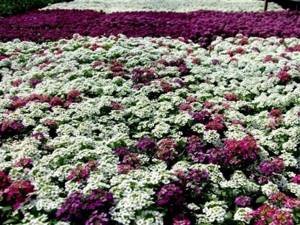
In areas with warm climatic conditions, alyssum is grown as a perennial that blooms for a very long time - until late autumn
Alyssum in a tub or garden flowerpot is a frost-resistant summer and autumn flowering perennial that is easy to care for.
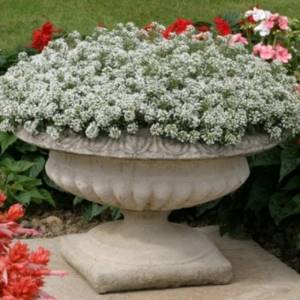
Alyssum is perfect for use in home gardening; it has many flowers and an elegant, very delicate aroma.
Fans of creating flower arrangements on the loggia very often use such a decorative crop as a beautiful and unpretentious border design for other plants.
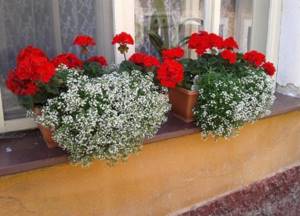
Alyssum is actively grown on the balcony
What climate is the plant suitable for?
Planting of ornamental crops in the harsh northern climate is carried out only by seedlings with sowing of seed material in early February. In regions with warm weather conditions, a profusely flowering plant can develop over many years, while it blooms almost constantly.
From the moment of germination of seed material to the first flowering, as a rule, one and a half to two months pass, and the most favorable temperature for the crop is a temperature regime of at least 15–18°C.
Medicinal properties of Lobularia
Alyssum has found use in folk medicine as a diuretic and laxative. The culture also helps in the treatment of diseases of the lungs, kidneys, and for the treatment of bites. Alyssum is used to eliminate hernias, colds, and remove kidney stones.
A mixture of alyssum leaves and honey is used in cosmetology to help get rid of age spots. Sometimes alyssum is dried and placed in the house. It is believed that its aroma helps maintain body tone, get rid of headaches and insomnia.
Description
Alyssum can be found from early spring to late autumn in bright flower beds, in border decoration, in tubs and pots on loggias and balconies.
It is divided into annual species, which are notable for their long flowering. And perennials that tolerate wintering well.
A low-growing plant grows from 15 to 40 cm in height. At the base of the root system, the stems begin to branch and become slightly woody.
It produces shoots 25-30 cm long, on which oblong-shaped leaves grow.
Small flowers are collected in a beautifully decorated umbrella. There are white, red, pink, lilac colors.
It has a honey aroma that attracts bees and serves as a honey plant.
Inside the fruit there are seeds that remain viable for a long time, up to three years.
Varieties of Alyssum flower
About 100 varieties are known, but only five varieties of lobularia are most widespread in landscape design:
Mountain Alyssum (Alyssum montanum)
European, perennial variety, 10-20 centimeters high. With the help of stems, a creeping shrub is formed. The flowers are painted in a light yellow tint. Gives buds in early April and until May.
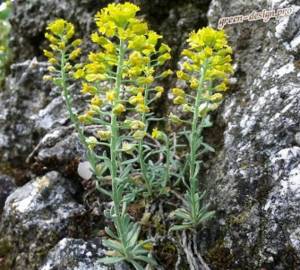
Mountain Alyssum (Alyssum montanum)
The most popular varieties are:
- Alyssum "Big Jam" flowers . A large-flowered variety with fairly large buds. They are colored in shades of purple, pale lilac, white or lavender. These bushes reach a height of up to 35 centimeters. The variety is drought-resistant and is not afraid of frost either.
- "Gold Placer". The bush has a spherical shape. The leaf blades are narrow. The inflorescences are racemose and delight with rich yellow shades. This variety is excellent for planting on alpine hills.
- "White carpet" The culture is distinguished by long and lush flowering, the buds are bright white. They are grown primarily as a ground cover.
With the help of stems, a creeping shrub is formed. The flowers are painted in a light yellow tint. Gives buds in early April and until May.
Alyssum or Marine Lobularia (Alyssum maritium)
This is a perennial variety, but in our latitudes it is widespread as an annual crop. Reaches a height of 20-25 centimeters. The stems form miniature rosettes and white or purple flowers. The flowering period is from the beginning of June until the onset of the first frost.
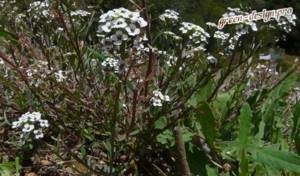
Alyssum maritium
The most popular varieties are:
- " Tiny Tim" Dwarf representatives reaching a height of up to 8 centimeters. It is distinguished by lush flowering, there are quite a lot of white buds, so the leaves are practically invisible on the bush. Grown as a ground cover.
- "Princess in Purple" . An ampelous variety that is suitable for planting in hanging pots or flowerpots. In length, such crops reach up to 35 centimeters. The flowers have a pale lilac hue and an incredible aroma.
- "Violet Konigin" . Compact bush, up to 10-15 centimeters high. The purple hue of the buds attracts attention.
Reaches a height of 20-25 centimeters. The stems form miniature rosettes and white or purple flowers. The flowering period is from the beginning of June until the onset of the first frost.
Alyssum or rock alyssum (Alyssum saxatile)
Herbaceous plant for open ground. Reaches a height of 25 centimeters, resembles hemispherical bushes. It reaches a height of up to 30 centimeters and a diameter of up to 40 centimeters. The bases have branched shoots; over time they become woody.
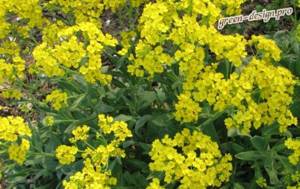
Rock Alyssum (Alyssum saxatile)
The rosettes are formed on the basis of obovate-shaped leaf plates; visually they are colored in a bluish tint. The inflorescences are racemose, formed by yellow flowers with notched petals. The most popular variety is considered to be “Golden Wave”. Its height reaches up to 20 centimeters.
The Plenum variety is also popular. The height of the bush is up to 30 centimeters. It is distinguished by attractive double flowers in golden shades.
Creeping Alyssum flower (Alyssum repens)
A perennial representative of the flora, 45-60 cm high. The leaves are semicircular, collected in a rosette.
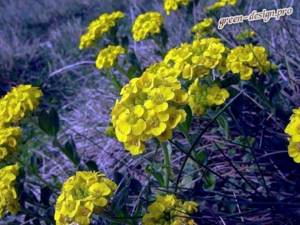
Creeping alyssum (Alyssum repens)
The flowers are bright yellow and begin to bloom in spring.
Types and varieties, their shades
Crop varieties may differ in flowering duration, size, and shades. Work on developing new species and varieties continues. The most popular types of culture presented at present are the following.
Rocky. The stem reaches a height of 30 cm, the color of the foliage remains even in winter. The flowers are presented in paniculate form, but flowering does not last long, although it begins quite early. Particularly popular among gardeners are the low-growing Compactum variety, the medium-growing Plenum with yellow flowers shimmering in gold, the yellow-brown Dudley Neville variety, and the highly branching Golden Placer variety.
Several other varieties of the presented crop deserve special attention.
"Wonderland White". This is a compact specimen no higher than 8 cm. It is distinguished by lush and long-lasting flowering and good branching. It is used in the design of borders, rocky hills, framing flower beds and ridges, and can be grown in pots or balcony boxes.
